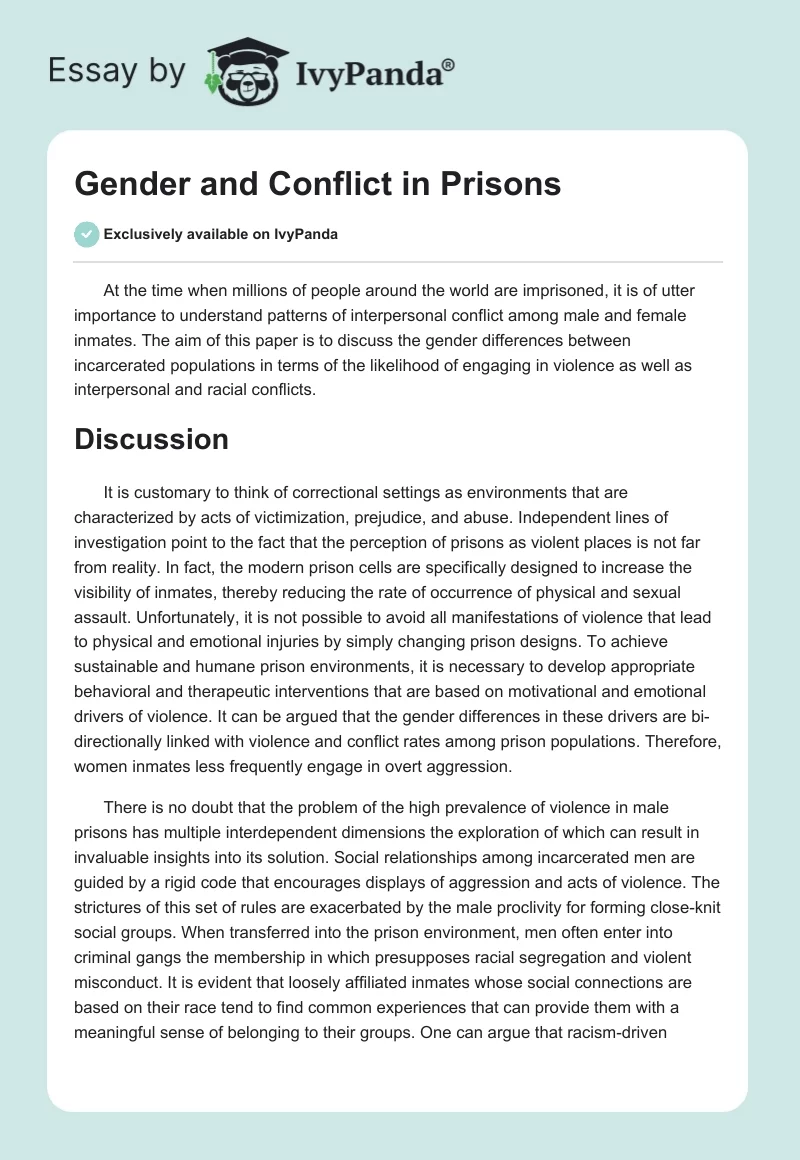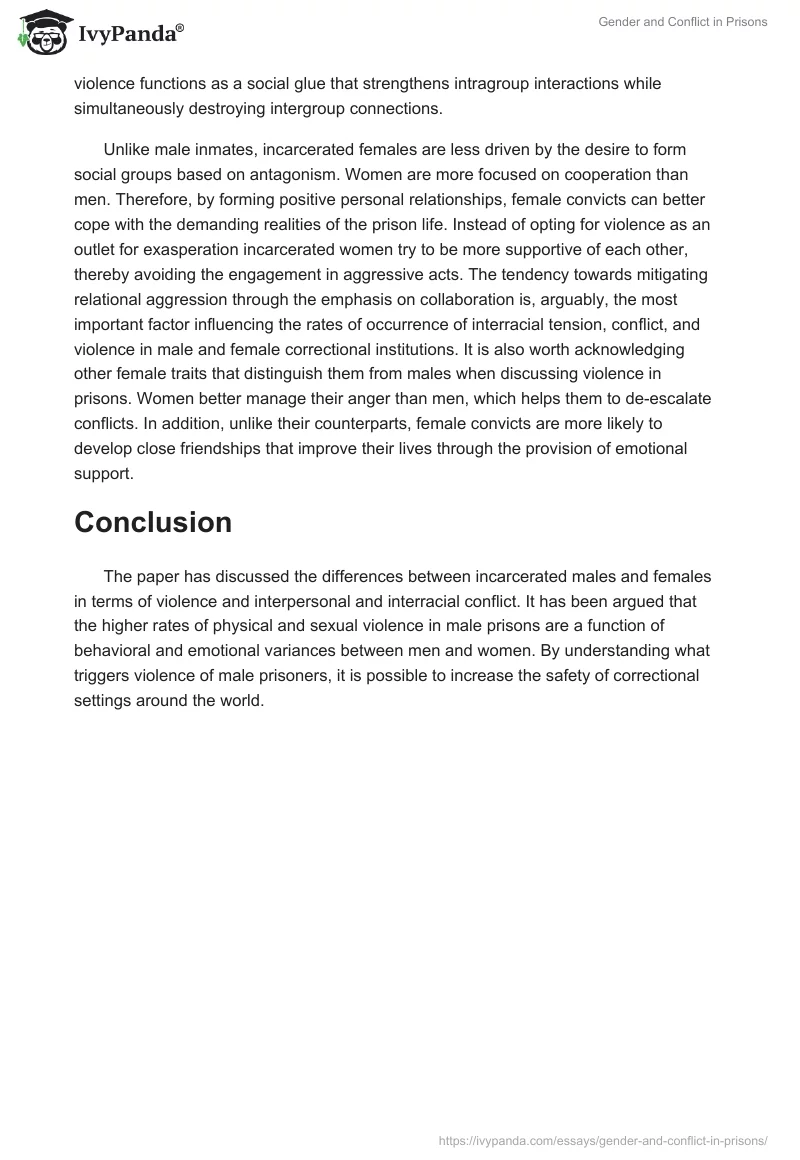At the time when millions of people around the world are imprisoned, it is of utter importance to understand patterns of interpersonal conflict among male and female inmates. The aim of this paper is to discuss the gender differences between incarcerated populations in terms of the likelihood of engaging in violence as well as interpersonal and racial conflicts.
Discussion
It is customary to think of correctional settings as environments that are characterized by acts of victimization, prejudice, and abuse. Independent lines of investigation point to the fact that the perception of prisons as violent places is not far from reality. In fact, the modern prison cells are specifically designed to increase the visibility of inmates, thereby reducing the rate of occurrence of physical and sexual assault. Unfortunately, it is not possible to avoid all manifestations of violence that lead to physical and emotional injuries by simply changing prison designs. To achieve sustainable and humane prison environments, it is necessary to develop appropriate behavioral and therapeutic interventions that are based on motivational and emotional drivers of violence. It can be argued that the gender differences in these drivers are bi-directionally linked with violence and conflict rates among prison populations. Therefore, women inmates less frequently engage in overt aggression.
There is no doubt that the problem of the high prevalence of violence in male prisons has multiple interdependent dimensions the exploration of which can result in invaluable insights into its solution. Social relationships among incarcerated men are guided by a rigid code that encourages displays of aggression and acts of violence. The strictures of this set of rules are exacerbated by the male proclivity for forming close-knit social groups. When transferred into the prison environment, men often enter into criminal gangs the membership in which presupposes racial segregation and violent misconduct. It is evident that loosely affiliated inmates whose social connections are based on their race tend to find common experiences that can provide them with a meaningful sense of belonging to their groups. One can argue that racism-driven violence functions as a social glue that strengthens intragroup interactions while simultaneously destroying intergroup connections.
Unlike male inmates, incarcerated females are less driven by the desire to form social groups based on antagonism. Women are more focused on cooperation than men. Therefore, by forming positive personal relationships, female convicts can better cope with the demanding realities of the prison life. Instead of opting for violence as an outlet for exasperation incarcerated women try to be more supportive of each other, thereby avoiding the engagement in aggressive acts. The tendency towards mitigating relational aggression through the emphasis on collaboration is, arguably, the most important factor influencing the rates of occurrence of interracial tension, conflict, and violence in male and female correctional institutions. It is also worth acknowledging other female traits that distinguish them from males when discussing violence in prisons. Women better manage their anger than men, which helps them to de-escalate conflicts. In addition, unlike their counterparts, female convicts are more likely to develop close friendships that improve their lives through the provision of emotional support.
Conclusion
The paper has discussed the differences between incarcerated males and females in terms of violence and interpersonal and interracial conflict. It has been argued that the higher rates of physical and sexual violence in male prisons are a function of behavioral and emotional variances between men and women. By understanding what triggers violence of male prisoners, it is possible to increase the safety of correctional settings around the world.


